Lessons on the Silk Road: Bukhara
- Ian Rosenberg

- Jul 7
- 11 min read
This post is a continuation of the previous one, expanding on the lessons I learned in each of the three Silk Road cities I visited during my time in Uzbekistan. You can read that here, if you missed it.
First Impressions
Bukhara was our first impression of Uzbekistan. We arrived to the city in the middle of the hottest day of the year, a blistering 115°F. The wind was hot, the sun was brutal, and even a few minutes outside was enough to tire you out. I was surprised. Overall, life is slow here. I was expecting something like Marrakesh or Tel Aviv here… a land of bustling Middle Eastern markets, incredible hustle from every salesman, and streets so busy you can’t even hear the conversation you’re having. But that’s not the case. Morocco got just as hot when I was there, and still, life didn’t pause.
Instead of those crazy Marrakesh markets that I got even in the peak of the summertime heat, the cities are dead during the day, with only the occasional tourist who dares to venture out in the midday sun wandering freely. At night, the cities fill with locals, looking to stroll around their beautiful cities looking for a bite to eat or a new item in their wardrobe.
Like Morocco, there’s not much to do in Uzbekistan, it’s mostly just wandering around to shop or admire the architecture. The architecture is the finest Persian architecture you could imagine, with grand mosques and elaborate tile work stunning even me who knew what I came for. The food is Central Asian, with plov, lagman, beshbarmak, samsa, manty… all the staples we’d gotten quite used to in Kazakhstan and Kyrgyzstan. The catch-all language is Russian, and out in the Karakalpak-speaking north of the country, we had to rely on Russian translators instead of Uzbek ones because Karakalpak is not supported on Google Translate. The script is the same as ours, after a mid 2010’s switch away from Cyrillic. The religion is Islam, and many women wear head scarves, but it’s not a hijab, rather, a fashionable covering made from fine silk, dyed using natural traditional methods, and embroidered with floral patterns fine camel wool. The scarves don’t even cover their hair entirely most of the time, it’s more for the fashion than it is for the religion. Call to prayer exists here, but it’s quiet—nearly inaudible in the winding roads of the old cities. Uzbekistan is a mix unlike anywhere else I’d ever seen.
Jewish Life in Bukhara
We came to Bukhara first, despite it being a few stops past Samarkand on the train from Tashkent, because I was hoping to attend a Shabbat service at the one remaining synagogue in the city.
As I mentioned in the previous post, at one point, over 20,000 Jews lived in Bukhara in complete harmony with the Muslim majority. Or so the Uzbeks claim. From what I could gather, there may have been, at some points in history, a tax on Jews and Christians living in the land (pretty common in most Muslim-majority areas), but in general, the Jews were happy. As tended to be the case in most Muslim or Christian areas, whose religions prohibit interest on loans and exchanging money, Jews took on the financial roles in the city. But this was done without a “Jews control the wealth” or a “Jews run the society” conspiracy evolving. It was just the way society fell. But Jews also took on normal jobs too. They were craftsmen, scholars, bakers, you name it. There was no distinction between a Bukharian Jew and a Bukharian Muslim. They were both just Bukharian.
Unfortunately, as the Rabbi is old and the weather that day was so absurdly hot, there was no Shabbat services. But that’s the exception, not the norm. On nearly every other Friday of the year, many of the city’s 200 remaining Jews will show up for services, respecting and continuing their traditions. I just managed to get incredibly unlucky. Instead, I got to visit the Jewish Museum next door.
The guide at the Jewish Museum, I learned at the end of the tour, wasn’t even Jewish. He was a Muslim. But he’s friends with the Jewish community, and feels it important to share their history and keep the traditions alive. He said that often when people come to the Jewish Museum, they’ll greet him with a “shalom aleichem” instead of a “salaam aleikum.” They are, after all, the same greeting. He laughs, realizing just how little that knowledge shows of the culture of Bukhara. Here, the Jews speak Tajik or Uzbek, just as the locals. They greet each other with salaam aleikum, not shalom aleichem. Their religion does not preclude them from simply stating the normal greeting in Tajik and Uzbek, regardless of if that greeting is a borrowing from Arabic or not. It would be like going up to a Rabbi in the US and refusing to greet him with a “hello.” Just because you’re greeting someone Jewish—or in the case of the guide, someone who’s Jew-adjacent—doesn’t mean that you deserve to change your behaviors.
He said Jews use other expressions derived from Arabic as well. They’ll let out an occasional alhamdulillah, inshallah, or mashallah. Because again, just because “Allah” is often used to refer to the Muslim God, it does mean just God. It would be like an American Jew refusing to refer to our God as God, instead, preferring to refer to Him only as Adonai or Eloheim. Yes, in cases, it makes sense, but it’s not taboo to use the English word.
For me, this was a total breach of my understanding of the Muslim world. I know I’d told people, said to people previously, that I feel there is no language where religion and language are so intertwined as in Arabic. But I’m completely wrong. Just because the word for “God” is different—and one often at the forefront of the Western psyche nowadays—doesn’t mean that Islam is inherently baked into Arabic. Don’t we have “Thank God,” “God Willing,” and “Oh my God” used secularly in English?
The guide went on to explain more about the history of the Jews in Bukhara. Originally, when the city was first expanding, due to its strategic position on the Silk Road, many diverse populations came to the area. This included Jews. And there were still few buildings in the city, and the builders were so busy building houses that some things had to take a back seat: namely, religious buildings. Originally, mosques and synagogues were one building. They had symbolism of each, and prayer times were organized around when each community needed to use it the most. There was an ark and a qibla. There was a minaret and Stars of David. Both groups were happy—they had what they needed. This forced coexistence led to the difference in religion not being scary here, but instead, beneficial.
By the way, I learned that the word minaret comes from menorah, lighthouse in Arabic, as before Islam, many ancient minarets were previously used for illumination. Obviously, related to the Jewish menorah as well.
Jews participated actively in trade and education all the way until the 1990s. Yes, decades past the formation of Israel and the subsequent expulsion from nearly every Arab Muslim state in the Middle East. In the early 1990s, with the dissolution of the USSR, Jews left willingly, as did many with the means and connections to leave. They didn’t leave because of persecution or hardship; rather, they left seeking opportunity in Israel, New York, or Europe. Many Jews still return today on heritage trips, and flights to Tel Aviv run four days a week (with Friday and Saturday obviously excluded from the schedule).
I never thought that in a Muslim country, when I am asked my religion, I’d happily and proudly respond with Jewish (Yevreiy in Russian), only to evoke a smile on the other person’s face and for them to tell me excitedly about how much the country loves Jews. I just hope that one day, the world can be this way. That I can be proud to be Jewish regardless of where I go, and that our dedication, tradition, and love for our history is as appreciated as it is here.
The Ark
The Ark is the citadel of Bukhara, once home to the khan of the mighty Bukharian Khanate (rival to the Khiva khanate). The Ark lasted for centuries after its heyday, and it took until the Soviet bombing campaign of the mid 1900s to finally bring it to the ruins it is today.

The Soviets decided that many parts of Uzbekistan’s cultural heritage were no longer in line with the good Russian traditions they were trying to promote, and thus, eliminated them. Today, the vast majority of The Ark is rubble, with only a small portion being rebuilt today. Among those portions that are rebuilt are the mosque, greeting hall, and the throne room.
The mosque, though now a museum of religious artifacts, was very beautiful. Typically, the insides of mosques are not supposed to catch the eye. They’re not supposed to detract from your prayer and your dedication to Allah. But this mosque, the private mosque of the Khan of Bukhara, could afford to be more decorated than your average mosque. It’s still nothing like an Eastern Orthodox church or a Buddhist temple, but it’s worth noting regardless.
Interestingly, non-Muslims were not permitted to even see the mosque. And this is where I hinted at some skepticism of how “inclusive” Bukhara really was. Clearly, religious minorities were treated well in the region, as they lived there for a long time with little complaint, but there are certain things that made me curious about how much they put up with that just seemed “normal” things were for, say, Jews or Buddhists. Non-Muslims had to enter the Ark from a secondary entrance, not the grand one, as to avoid witnessing the mosque.
I bring up Buddhism, and I should note that Islam here looks very different from a typical Arabian Islam. In particular, prayer beads—a staple of Tibetan Buddhism—are used here. Holding the ring of beads in one hand, you pass them between your fingers in an endless circle, repeating the name of Allah until you fall into a trance. This is meditation? From an Islamic perspective? Clearly something that arrived to the region via trade routes.
The greeting hall was nothing too special, but I bring it up just to mention the tradition where every morning, a line a hundred people long would come to greet the khan and bring him gifts. Could you imagine saying good morning over a hundred times every day?
Finally, the Throne Room spoke to the Bukharian’s tradition of making everyone feel welcome and heard. Entering the room, you do not immediately see in front of you. You don’t see the Khan, rather, there’s a ten-foot wall blocking the view. This isn’t to keep those “unworthy” from seeing the khan. In fact, it was quite the opposite. The wall’s primary purpose was used for the khan’s open-house sessions, where commoners could come to The Ark and put in their complaints. They could complain to the khan and tell him what they want to see change in the city. The khan put the wall up in this room so that all felt welcome. They could come to the room, stand behind the wall, voice their complaint, and leave if they so wished, removing any fear of negative consequences. It was used to generate anonymity, not for the sake of the khan, but for the sake of his subjects. I thought this was really cool, and completely representative of the spirit of Bukhara that had been made so clear to me.

The Summer Palace and the Last Khan of Bukhara
In the final years of the Bukharian Khanate—in the late 1800s and early 1900s—a Russian educated, progressive khan ruled over the region. Though Muslim in practice and faith, he saw Islam more as a structural framework that can be adapted to the modern world. He wanted all to feel welcome and worked to bring Bukhara into the 20th century. His summer palace, Sitora-i-Mokhi Khosa, was simultaneously a palace and a guesthouse for important traders passing through the city.
As a sidenote, most Bukharians don’t speak Uzbek at home, rather, Tajik (though nearly all are raised trilingual in Uzbek, Tajik, and Russian). Tajik is a Persian language in the Indo-European family, whereas Uzbek, Kyrgyz, Kazakh, Dungan, Uighur, and Karakalpak are Turkic languages with a similar vocabulary and structure. Because of Tajik’s roots, it shares many root words with Hindi and even English. Sitora in Tajik means “star.” Some words don’t change that much over distance or time, I guess.
The palace was ornately decorated, with Christian, Jewish, and Muslim symbolism present everywhere. Something else you’ll notice around the palace: portraits. This didn’t catch me off guard until it was pointed out to me, but it is remarkable. Islam forbids the portrayal of humans in any artistic form, be that photography or painting. But the khan, who studied in Moscow, was convinced that allowing such art isn’t a sin. Portraits of him and his family hang on the walls, and mirrors—which previously didn’t exist in the region—brought from China and Japan are commonplace.
The palace was adorned with foreign gifts—Japanese tea bowls, Chinese pottery, and European chandeliers and furniture. Peacocks roam around the courtyard. It’s a celebration of art and beauty from both Uzbekistan and from far away.
Funny enough, the khan was absolutely terrified of being killed. Taking a tour around the palace, the guide explained to us the many ways in which he ensured his safety. He wore upwards of seven layers of clothes to protect himself from stabbings, he ate off of pure silver plates which would tarnish if poison was detected, and he and his guests ate out of one big bowl, so that if any of the food was poisoned, he who poisoned it would also suffer. It’s funny because every time we’d turn a corner, she’d point out some other way in which he avoided dying. He did not die as khan, and fled to Afghanistan when the Russians took over. He died in 1944, 16 years into his exile.
To’dako’l Lake
On our last day in Bukhara, we decided that we’d exhausted most of the city’s activities and wanted to go cool off (at the recommendation of the guide at the Jewish Museum). We took a taxi from Sitora-i-Mokhi Khosa to To’dako’l Lake, where a dozen very local beach resorts were all lined up along this one decently-sized lake in the middle of the Kyzyl-Kum desert. We were probably the only foreigners there, though we met a few people who spoke English. We mostly just enjoyed the afternoon, dipping in and out of the lake and the swimming pool, ordering an egregious amount of food, playing in the giant bubble bath with everyone else at the resort, and picking up a game of soccer and volleyball with the locals. It was just a good, lighthearted, fun time.
Until we had to leave. See, the Uber-equivalent here doesn’t let you call a taxi to 45 minutes deep into the Kyzyl-Kum. There were no taxis around, and we left before our friends wanted to head back, as we wanted one last sunset over the old city of Bukhara. So we hitchhiked.
Hitchhiking is way more common here, and way safer than it is back home. Within five minutes, we got our ride back to civilization. It was a family of five, with three young kids. First when they pulled over and I saw that the back seat was full, I was reluctant to get in the car. But the kids all scootched over and the oldest held the baby. We made it fit.
We ended up having a nice conversation with the dad, who was driving. He is a professional truck driver, delivering goods all around Central Asia. He said he’s driven to Iran, Turkey, Russia, Georgia, Kyrgyzstan, China, you name it. He pointed out to us the radars that are used here to verify your speed. Apparently, if they catch you even 5 kph over the limit, they’ll take a picture of your plate and send a ticket automatically to your house. The fine is $20, which, to us doesn’t sound like a lot. But he explained that for your average family, a $20 fine is significant. Scaling based on median income, that would be the same as a $250 ticket in the US.
He was enjoying his weekend with his family before he has to get back on the road, and they, just like us, were at To’dako’l, just at a different resort than us. They were so incredibly kind, and had a nice conversation with us despite neither of us speaking each other’s language(s). He didn’t ask us for any money, but for the fact that he helped us get quite literally out of the middle of nowhere and into a place where we could order a taxi back, we gave him 100,000 so’m (approximately $7).
That’s about it for the extra stuff in Bukhara, I’ll have more about the other cities (there’s way less to say) coming up in the next post.


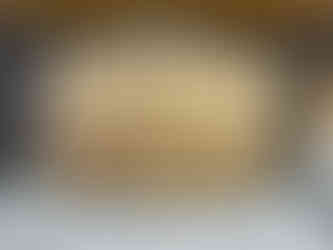

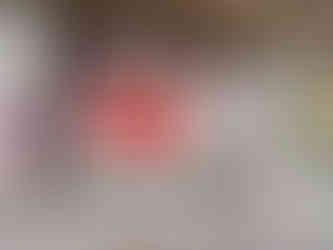




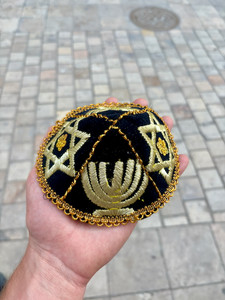



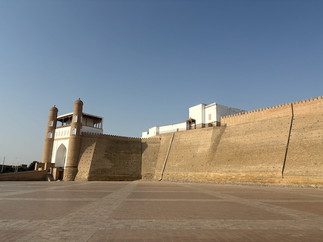


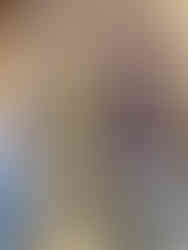



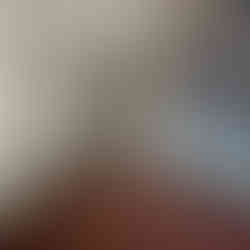



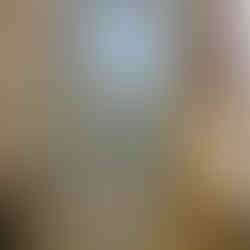

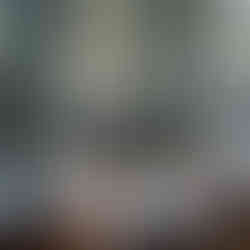


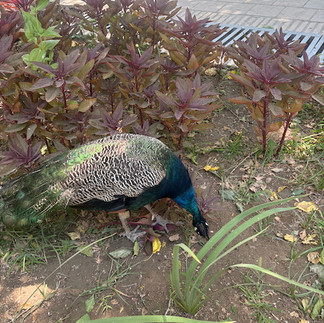

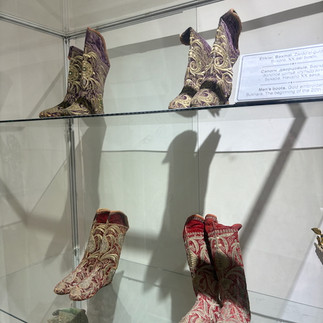






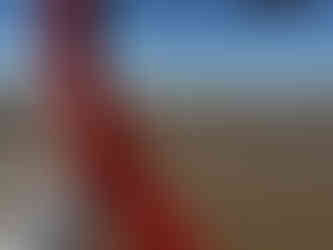






Comments